When 11 days in Japan still aren’t enough!
Visiting the Karen Long Neck Tribe

Contributed by Travelista Journal
One of the tourist attractions in Northern Thailand is the Karen Long Neck Tribe. It is a village near the border of Myanmar where the Karen tribe lives. I’ve heard about this tribe from a TV documentary, the National Geographic Magazine, and reviews from tourists who have been in the village.
After finding out more about their story, how their vulnerability has been exploited both by the government agencies and the tourism industries, it started to feel uncomfortable to visit the place. It made me think whether these people are for tourist attractions. Is it unethical to treat them like a human zoo?
Also read: This is What It’s Like to Ride a Sleeper Train to Chiang Mai
We signed up for a one-day tour in Chiang Mai, and part of the tour is a visit to Karen Long Neck Tribe. My goal in joining the tour is to make connections with these people, to create a symbolic relationship by reaching out and finding a common ground instead of treating them as spectacles to exploit.
Who are the Karen Long Neck Tribe?
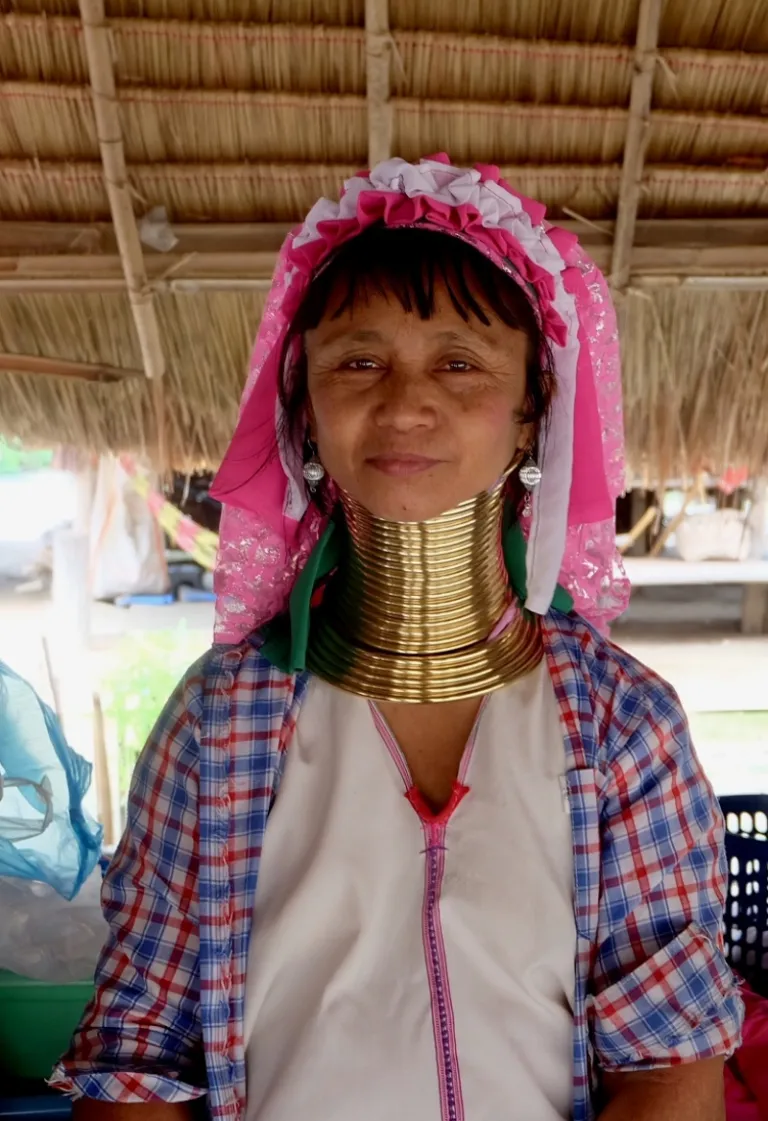
This tribe originally lives in the mountains of Myanmar near the Thailand border. Thousands of their members have fled from Myanmar to live in Thailand because of the conflict in their home country. Thailand granted them a temporary stay under “conflict refugee” status. Some left Burma because of suppression and exploitation. Burmese soldiers would demand to hand over some of their crops or farm animals. Those who refused to do so would end up in retributions and killing.
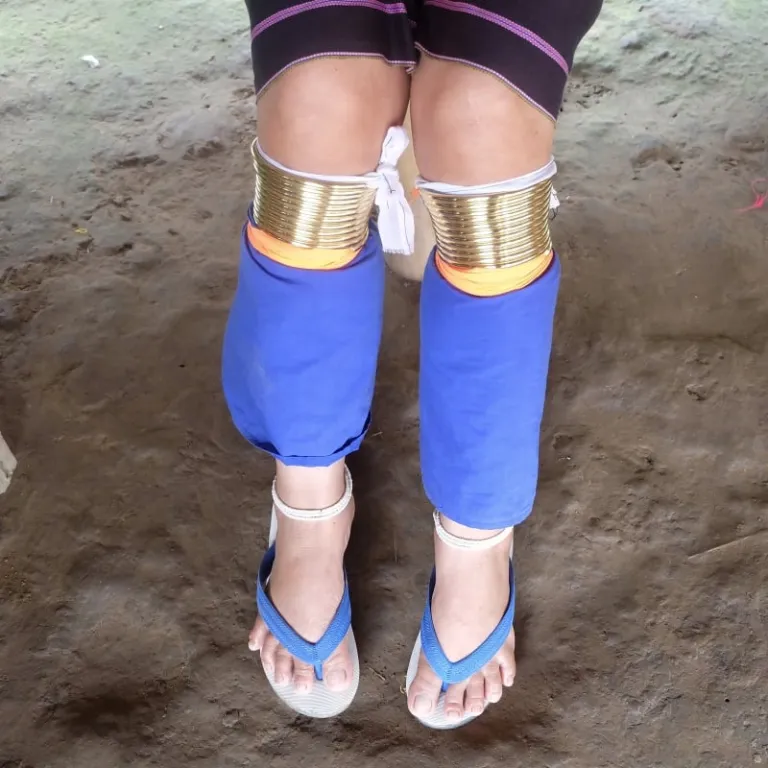
The tribe has a custom where some women need to wear brass coils around their necks to create the appearance of a long neck but in real life, these women do not have an extra long neck. Some wear heavy rings around their forearms and on the lower part of their legs which is different from the rings they wear on their neck.
The rings
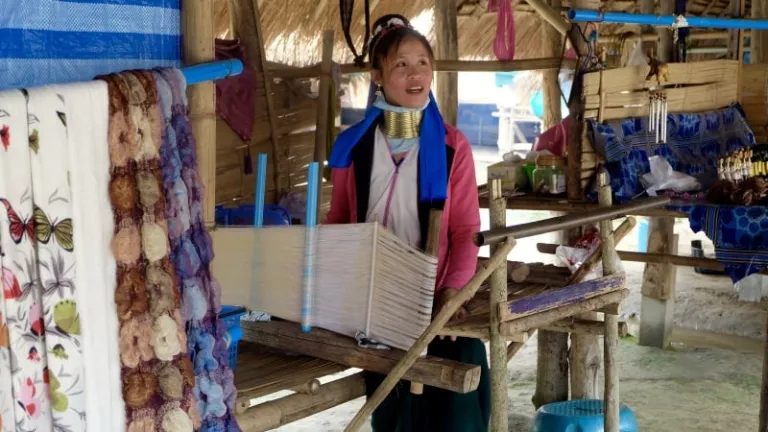
An ancient legend claimed that wearing the rings around their neck will protect them from tigers that usually target the necks. It will protect their tribe from extinction. Some women also wear rings around their necks to respect their ancestor traditions. The more rings women can wear on her neck, the more beautiful she is. Short necks are considered unattractive.
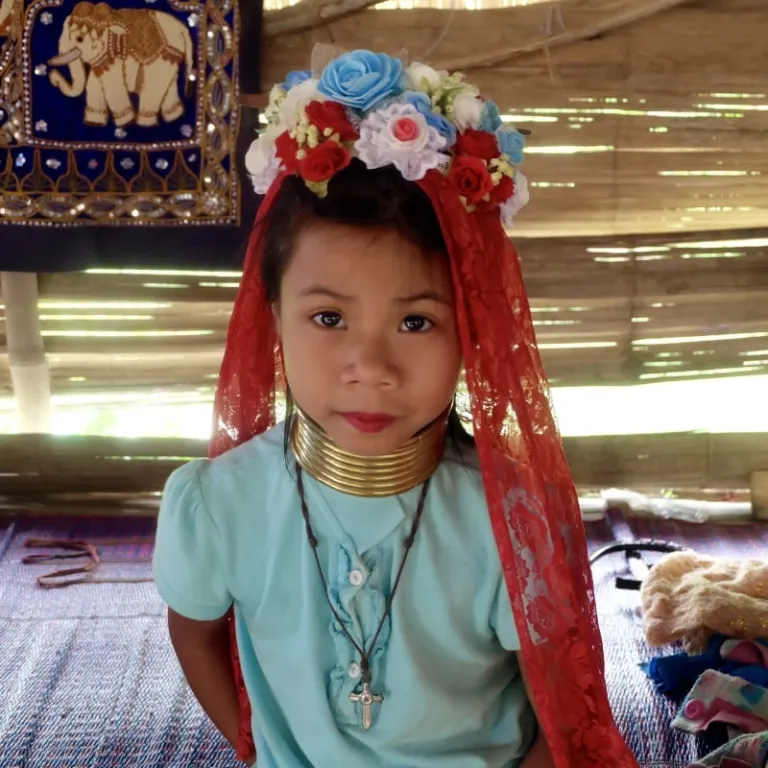
The women of Karen tribe start to wear brass coils at an early age, anytime between five to nine years old. The weight of a brass coil worn by the Karen tribe differ by age and length of time she has worn it. By the time the girls turn 15, they are able to choose if they will continue to wear rings all throughout their life or not.
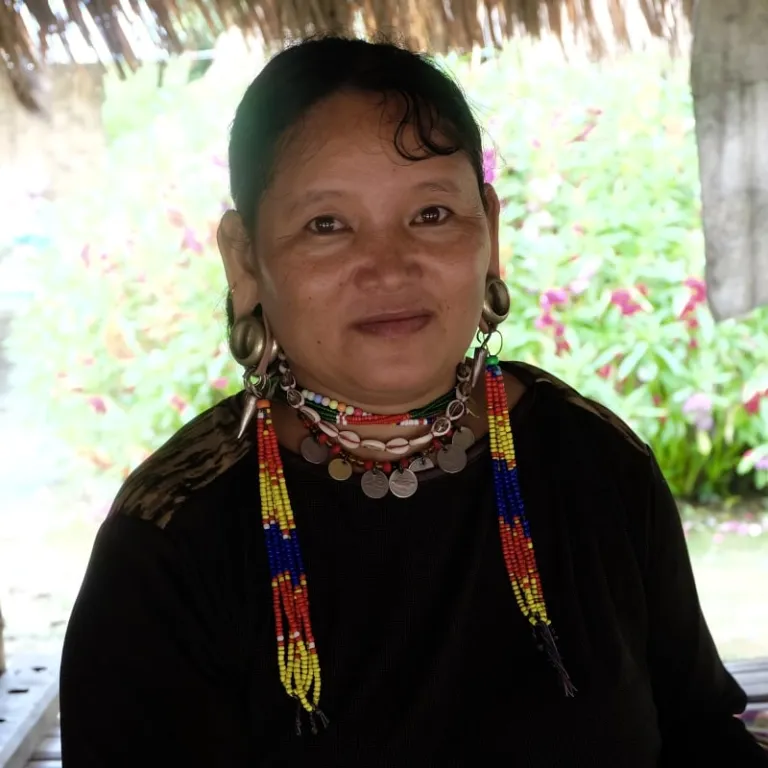
However, as the tradition evolved, only girls who were born on a Wednesday night during a full moon were adorned with the neck rings. A girl who was born on a Wednesday night must wear the neck rings throughout her life. Refusal to wear the neck rings will cause her to be exiled from the community.
Exploitation and tourism
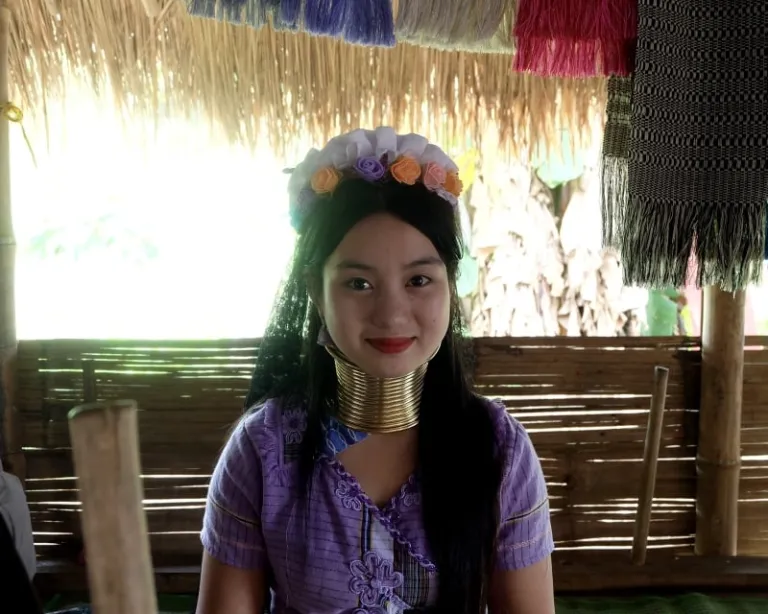
What kind of life do they have in Thailand?
These people are living with a refugee status. The Thai government pays more attention to promoting them as tourist attractions. Tour operators make a sizeable income from bringing tourists to the village but the village itself get very little one. Tourist operators have been able to exploit the economic marginality and vulnerability of the tribe to their own advantage.
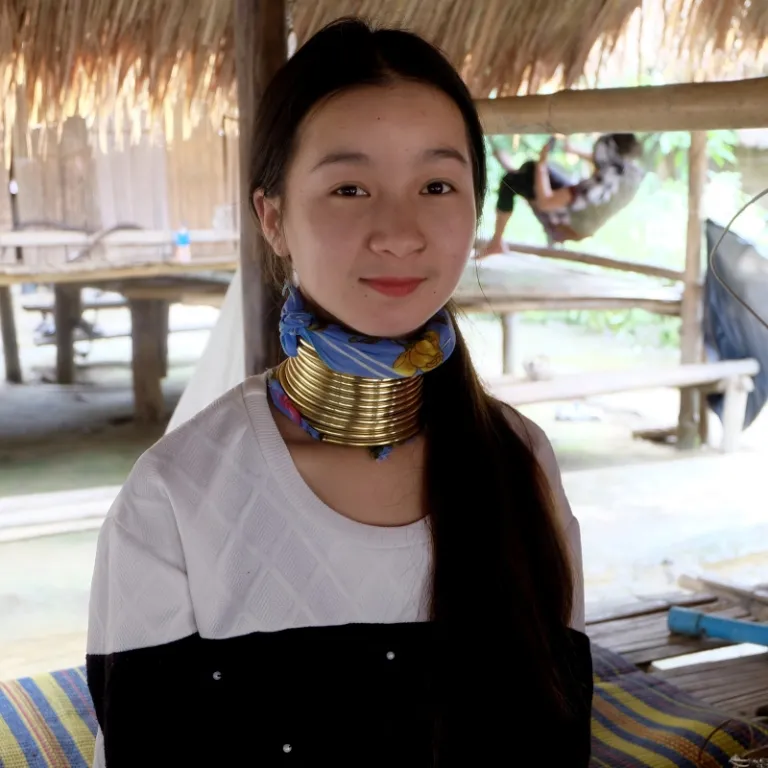
Today, girls are encouraged to wear the brass coils around their necks for tourist attractions and to make money from the tourist village authority. The more tourists who come to visit them, the better are their chances of earning an income.
Where are the men of the Karen Long Neck Tribe?
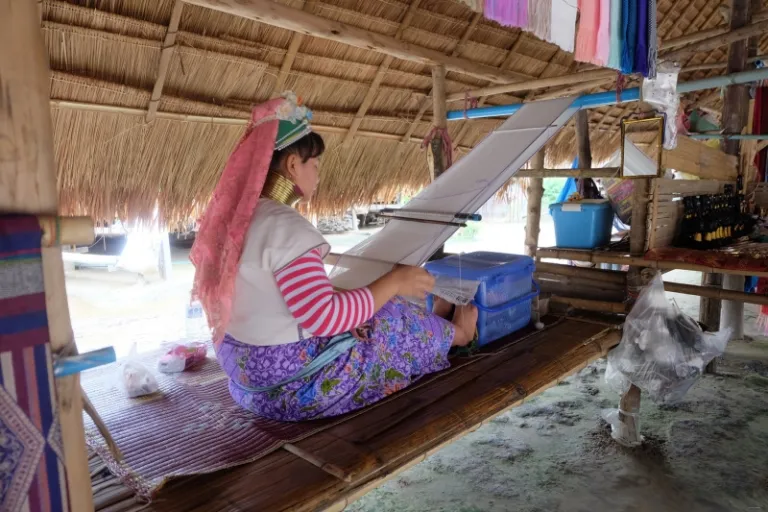
In Burma, men are known to be hard-working in providing for their family’s basic needs. They are skilled farmers, but life is not the same for men and women in Thailand. The women are the main provider for the family. Besides wearing the brass coils around their neck which brings them a monthly payment from the village tourism authorities, they make substantial earnings from selling scarves and souvenirs. Scarves are the only products which the tribe makes themselves. Women focus their occupation towards tourism as the “tourism” industry offers a better opportunity for cash than agriculture. They need to be there morning and evening to entertain tourists but can still continue to do their weaving in front of their huts.
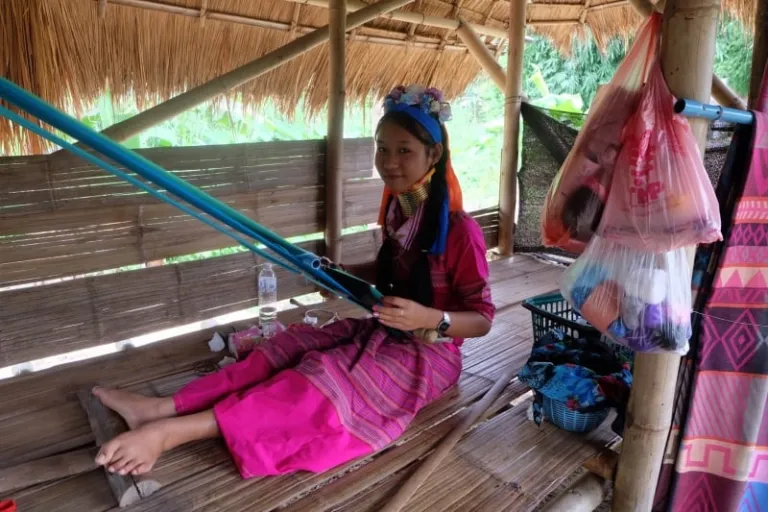
The men of the families are allowed to work in agriculture in their own village. With limited knowledge and technical skills, the men have movement restriction by the government, making it impossible for men to get paid jobs away from their village. Their traditional agricultural skill is no use as there is very limited land for cultivation in their village where they are allocated to stay.
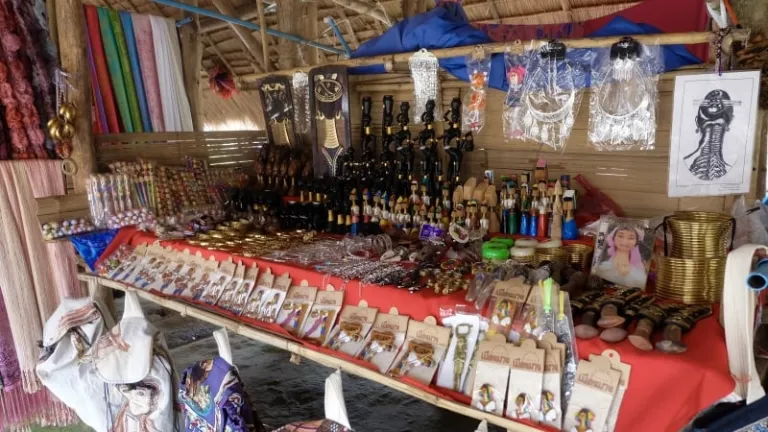
They are not allowed either to go anywhere. They must remain in the tourist village set up by the government. It appears that these people do have some basic rights on the paper, but sadly, they are much non-existent considering the restrictions that apply to their status which is a violation of their human rights.
On the other hand, children are allowed to go to school but in order to do that, they must learn the Thai language first which is quite impossible for them to actually go to school.
The road going to the village is a slippery dirt slope. The whole structure of the village is planned as a “tourist setting” a kind of living museum. It was very depressing, even amongst all the bright colours, designs and patterns.

The tourism industry has not delivered a better life for them. There is no infrastructure development, electricity supply, clean water supply, sealed roads, public transportations from the village to town, and qualified doctors or nurses in the village health centres. Thailand has not improved the tribe’s standard of living nor significantly lifted their life chances.
A travel to Karen Long Neck Tribe opened my eyes to the reality of their lives and the daily struggles that they face. Unethical, authentic or not as what some people would say, but this tour humbled me and boosted by heart for humanity.
If you choose to visit the village, please consider these recommendations:
- Do not just stop for a photo shoot. Try to extend your stay to learn about the people and hear their stories.
- Support the village by purchasing their handcrafts.
- Give a donation.
- Do your own research and find a responsible tour company that will promote social responsibility.
Also read: Northern Thailand Itinerary: 6 Days in Chiang Mai & Chiang Rai
Published at
About Author
Tess Buison
Subscribe our Newsletter
Get our weekly tips and travel news!
Recommended Articles
11 Days of All Things Weird & Wonderful in Japan I Tried to Limit My 3-Day Cebu Trip Budget But Failed Miserably Have you ever tried exceeding beyond your travel budget?
How I Travelled 30 Days to 5 Southeast Asian Countries Under ₱50k Budget Ready to take your Southeast Asian trip to a new level? How about travelling for a month through five countries?
We Travelled to 4 Countries in 10 Days with Just ₱27k (All-In) Budget Each 4 countries, 10 days with an all-in budget of only ₱27k each, learn how these Filipina siblings did it!
How We Spent 4 Days in Ho Chi Minh, Vietnam with ₱4k Pocket Money Inclusive of food, accommodation AND tours!
Latest Articles
Mother’s Wonderland: Quezon Province’s Fantasy Theme Park Explore a magical theme park in Tayabas filled with nature, art, and fantasy
Kayangan Lake in Coron, Palawan: Everything You Need to Know Dive into the crystal-clear magic of Kayangan Lake, the crown jewel of Coron, Palawan!
Dingalan Travel Guide: Nature Spots to Discover Now Underrated coastal gem in Aurora
What to Eat in Bicol: Iconic Dishes and Treats, and Unique Pasalubong You’ll Love Spice up your foodie adventure with iconic Bicol dishes and must-try pasalubong!
Top Travel Trends in the Philippines for 2025 New spots, tips, and trends

